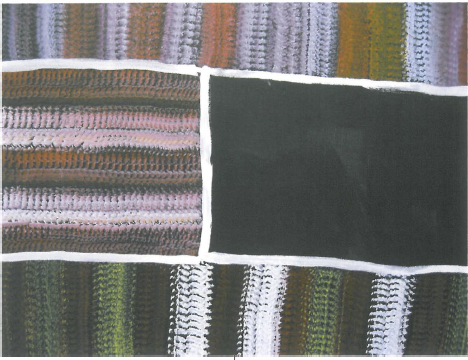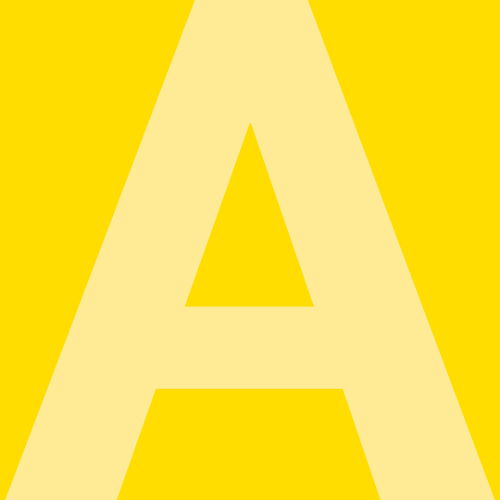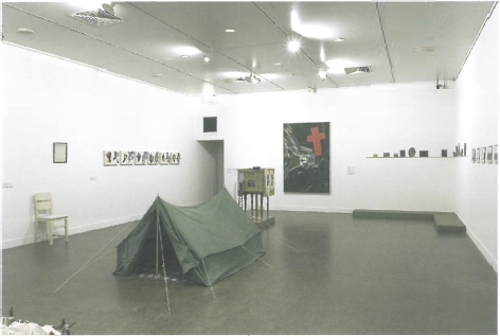
On first encountering the work of Barney and Tibby Ellaga the energy is palpable. The paintings are alive with it - shimmering, buzzing surfaces where stippled stripes of exuberant colour meet flat, cool waterholes. This exhibition, Dhum Ngun Nad Ngana, marks a significant point in Barney Ellaga's career. It also marks the debut of his wife, Tibby Ellaga as a painter in her own right.
Barney Ellaga, a senior Alawa man from South East Arnhem Land has been painting since 1990. Two years ago Barney and Tibby talked and it was decided that Tibby, who had been working in collaboration with her husband, could paint under her own name.
Barney Ellaga is one of the few Roper River landscape painters whose work appears entirely abstract. Most of the work from that region, exemplified by artists such as Ginger Riley, Gertie Huddlestone and Willie Gudabi, is more representational in its depiction of country. However all these artists have a common interest in strong colour and an ability to convey an 'aliveness' and energy in the country they paint. Also, like many of those artists Barney is an artistic individual who chose his own style of painting, fully aware of the way other artists in the region painted.
Barney Ellaga was born in about 1941. His father was an Alawa man and his mother, a Ngalakan speaker from Arnhem Land. Ellaga comes from Mamballi country to the south of the Roper River region and lives at Hodgson Downs or Miniyerri, an outstation near Ngukurr. Like all artists in that region, Ellaga paints his mother's country, which centres around the waterways and billabongs of the Cox River. His primary dreaming is 'sugarbag' or native bees that travel across the country. It is his particular depiction of 'sugarbag' that makes his paintings unique.
Barney's painting Dum-nyun-ngadanyana, Big Lagoon in Alawa (2004) is a large abstract painting where the space is demarcated by luminous stripes of yellow, pink and brown striations which create a strong contrast with the flat, quiet oblong of blue in the centre. The colourful striations of stippled, dry brushwork in the background give the feeling of an organic, active mass. They represent the bees moving across the country to the waterhole. This clever device creates an animated surface which seems to represent the unseen vibrations of country.
This motif is repeated throughout the show. Variations in the fields of vibrating striations are contrasted with a strong central motif. This is exemplified by Waterhole (2005). It is darker with a central matte black oblong bordered with striated panels on either side, the whole running vertically across the central section of the canvas. These stripes seem to be made up of double rows, like cornrows of the same colour beside rows of luminous complementary colours, which again create the illusion of an oscillating rhythm moving across the country. This could almost be called 'onomatopoeic' as the essence of the bees is captured in the active, buzzing surface of the canvas.
There are other complex stories represented in these paintings whose more specific meanings are hidden and masked beneath the seductive surfaces. There is the story of native bamboo and of an Old Man and a Big Cave; stories for which Barney Ellaga is custodian. These are hinted at rather than illustrated directly.
Tibby Ellaga's paintings refer to her mother's country and more specifically Mirringambirri. Some of her paintings such as Deelinginji (2005) are divided by a strong vertical motif, which cuts across multicoloured stripes. This painting refers to, 'The old Scabie Dog, the dog with no hair and a hole that it made', according to Tibby. Her paintings are similar in look and feel to her husband's, but they refer to different stories and tend to be smaller and less minimal.
This exhibition presented two interesting and interrelated bodies of work which represent this part of Southern Arnhem Land as alive with energy and story. It also represents the emergence of a new talent and it will be interesting to see how these artists' work develops in the coming years.












